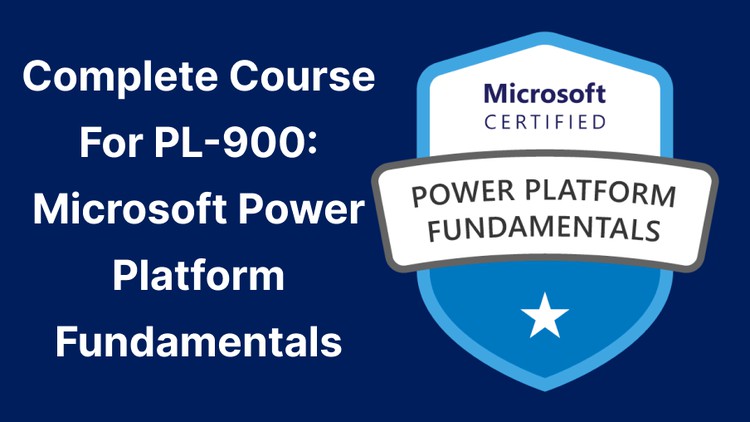
Microsoft Power Platform Fundamentals Exam Prep | Power Automate | Power Apps | Power Virtual | AI Builder
What you will learn
Able to understand PL-900 Exam
Get to know what kind of question asked in exam
learn new concepts by solving question
Able to clear exam on very first try.
Description
These are FULL-LENGTH tests that have been carefully built to help you crack the PL-900 – UPDATED Feb 2023.
Are you looking to start your career with the Power platform? Do you want that great job, but there is just one thing in the way, the PL-900? You have come to the right place. This practice test is the most efficient way to quickly ace the PL-900: Microsoft Power Platform Fundamentals with a great score.
There are no specific prerequisites recommended for the Microsoft Power Platform Fundamentals or PL-900 certification exam. However, candidates must note that prior experience in the required skills for the exam can be beneficial for their success. Most important of all, candidates must have the capabilities for the understanding of business value associated with Power Platform and the core components of Power Platform.
The Microsoft Power Platform Fundamentals or PL-900 certification exam focuses on the following important domains:
- Describe the business value of Power Platform (20-25%)
- Identify the core components of Power Platform (10-15%)
- Demonstrate the capabilities of Power BI (20-25%)
- Describe the capabilities of Power Apps (25-30%)
- Demonstrate the capabilities of Power Automate (10-15%)
- Demonstrate the business value of Power Virtual Agents (5-10%)
Course includes:
- Full lifetime access with all future updates
- 30-Day Money-Back Guarantee
Important topics covered in Questionnaire:
- Get data from different data sources
- Clean, transform and load the data
- Design a data model
- Develop a data model
- Create model calculations by using DAX
- Optimize model performance
- Create reports
- Create dashboards
- Enhance reports for usability and storytelling
- Identify patterns and trends
- Manage files and datasets
- Manage workspaces
Happy Learning and All the Best!